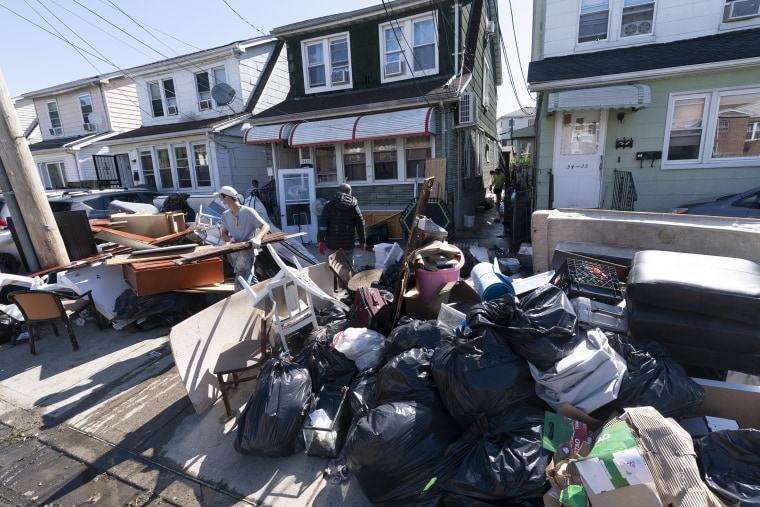New York officials are calling for a wider array of language options in severe weather alerts after Hurricane Ida’s floods disproportionately claimed Asian lives and devastated lower-income immigrant neighborhoods in September.
State Attorney General Letitia James sent a letter Tuesday calling on the National Weather Service and the U.S. commerce secretary to expand emergency alert language beyond just English and Spanish. In the letter, she cited the alerts that were sent out ahead of Ida’s “catastrophic” rain, urging residents to find higher ground in preparation for the life-threatening flooding.
But she said the messages didn’t reach those who needed them the most.
“The storm caused 18 deaths in New York, and the majority of those individuals were of Asian descent and did not speak or had limited proficiency in English or Spanish,” her office said in a news release.
James’ letter cited reporting by NBC Asian America documenting Ida’s impact on Asian neighborhoods in the city, where families drowned in their basement apartments. She urged the weather service to make translations available in all the languages spoken by members of a region where a given severe weather event will happen. In New York City, she said, that would be Chinese, Russian, French Creole, Bengali and Korean, as well as Spanish.
“The Service has recognized that the failure to issue alerts in Spanish when it is commonly spoken in the impacted area has contributed to tragic loss of life,” she wrote, adding, “Hurricane Ida struck more than seven years after these critical recommendations, yet the Service’s alerts were not distributed in several languages commonly spoken in the impacted areas in New York City.”

The letter was endorsed by a variety of city and state officials, including U.S. Rep. Grace Meng, state Sen. John Liu, State Assembly member Yuh-Line Niou and New York City Council members Linda Lee, Sandra Ung and Julie Won.
“It is sad that a loss of life is what it takes in order for key weather service updates to be available to non-English speaking New York City communities,” Meng said in the release.
Nearly a quarter of Asian American immigrants live in poverty, and an estimated 13 percent are undocumented, city data show. And experts say even those statistics are underestimates. Queens neighborhoods affected by the flooding relied on local organizers and neighbors to help with translation efforts when it came to distributing food and providing shelter to victims.
The day after the storm, nearly 500 people contacted Myoungmi Kim, the executive vice president of the Queens-based nonprofit group Korean Community Services of Metropolitan New York, or KCS. Although government assistance was available, she has said, it was difficult to navigate, especially because it was offered only in English.
“The day after the storm, so many people wanted to talk to me because of the KCS emergency fund distribution. But they couldn’t speak because of their crying,” Kim said in October. “They just cried and kept crying and crying because they had lost everything.”
James said it’s clear that offering disaster alerts and services in more languages saves lives. With climate change, it will only become increasingly necessary, she wrote.
“As federal, state and local governments confront increasingly extreme weather tied to climate change, the Service plays a critical role in providing Americans with potentially life-saving warnings,” she said. “Fortunately, the widespread use of cellular and internet technology, in addition to the array of television broadcasts, including those in foreign languages, makes it possible for the Service to instantaneously reach more Americans in harm’s way than ever before.”

